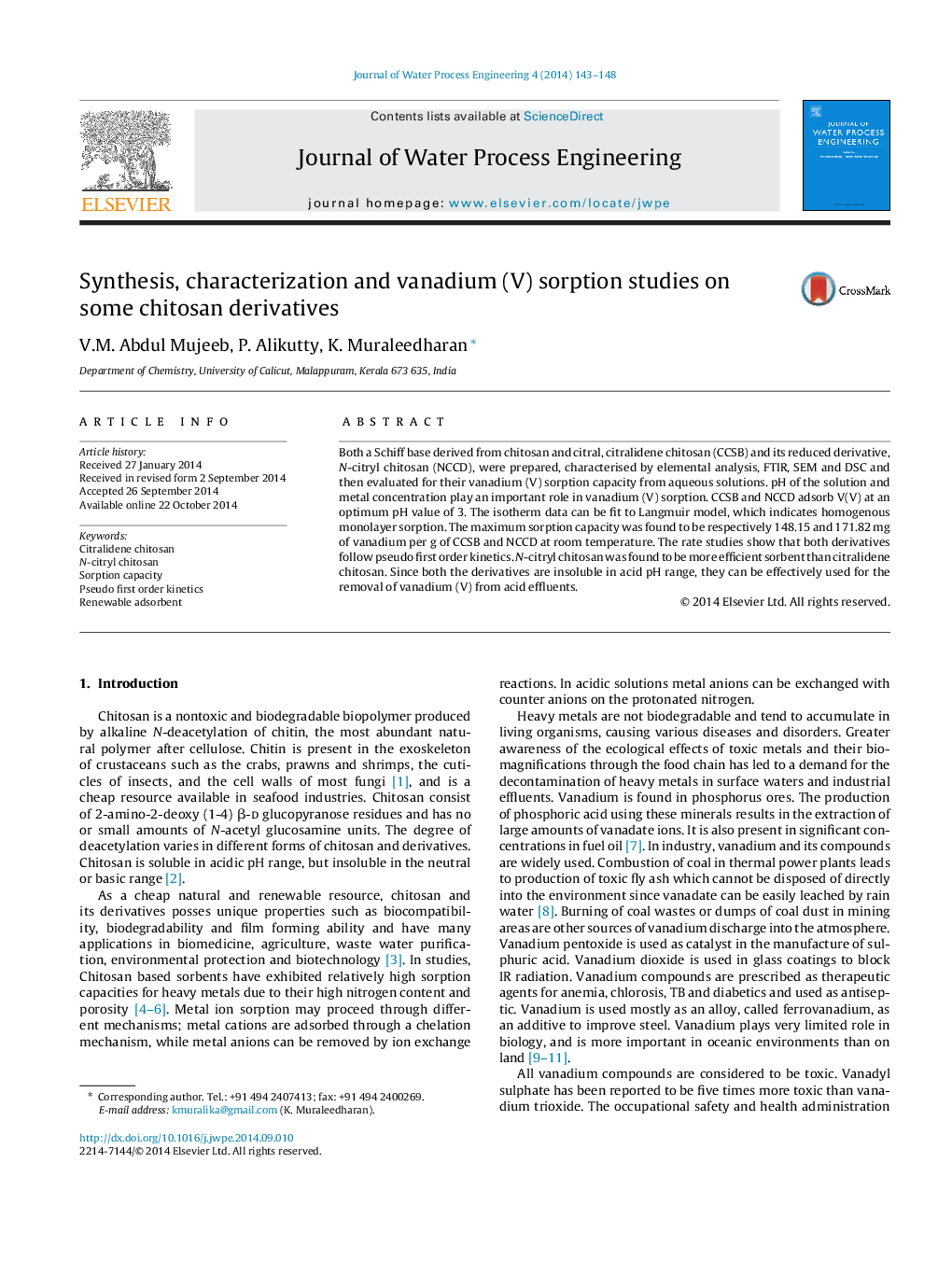| Article ID | Journal | Published Year | Pages | File Type |
|---|---|---|---|---|
| 232550 | Journal of Water Process Engineering | 2014 | 6 Pages |
Both a Schiff base derived from chitosan and citral, citralidene chitosan (CCSB) and its reduced derivative, N-citryl chitosan (NCCD), were prepared, characterised by elemental analysis, FTIR, SEM and DSC and then evaluated for their vanadium (V) sorption capacity from aqueous solutions. pH of the solution and metal concentration play an important role in vanadium (V) sorption. CCSB and NCCD adsorb V(V) at an optimum pH value of 3. The isotherm data can be fit to Langmuir model, which indicates homogenous monolayer sorption. The maximum sorption capacity was found to be respectively 148.15 and 171.82 mg of vanadium per g of CCSB and NCCD at room temperature. The rate studies show that both derivatives follow pseudo first order kinetics. N-citryl chitosan was found to be more efficient sorbent than citralidene chitosan. Since both the derivatives are insoluble in acid pH range, they can be effectively used for the removal of vanadium (V) from acid effluents.
